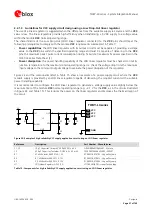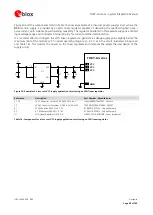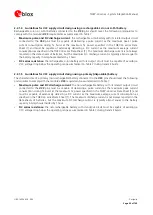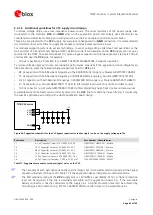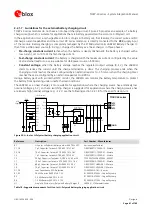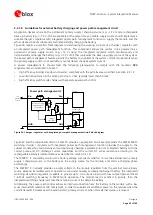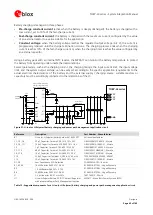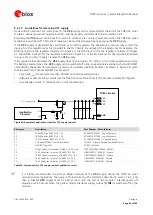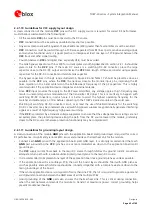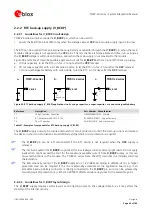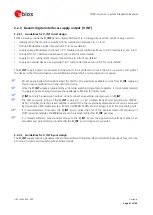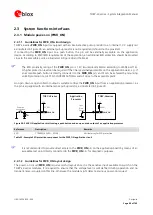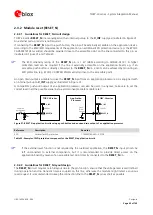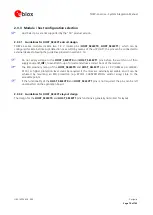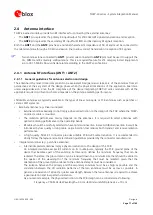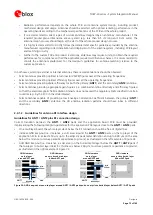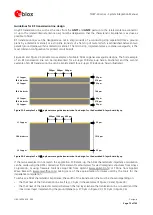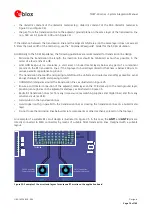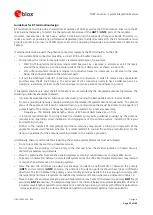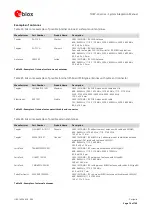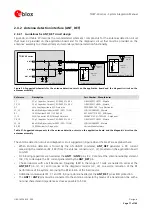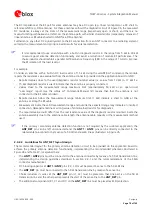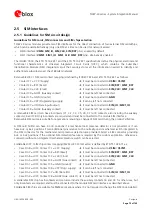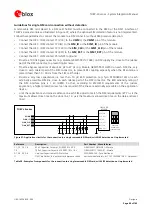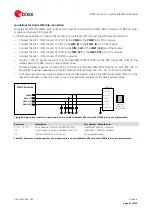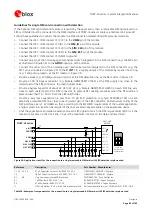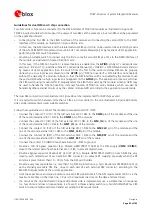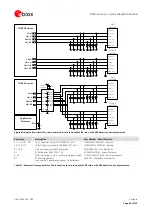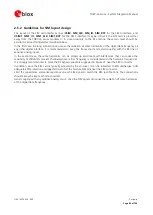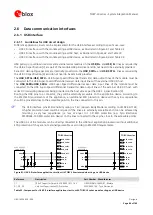
TOBY-L4 series - System Integration Manual
UBX-16024839 - R04
Design-in
Page 71 of 143
2.4
Antenna interface
TOBY-L4 series modules provide two RF interfaces for connecting the external antennas:
The
ANT1
pin represents the primary RF input/output for LTE/3G/2G RF signals transmission and reception.
The
ANT2
pin represents the secondary RF input for MIMO and Rx diversity RF signals reception.
Both the
ANT1
and the
ANT2
pins have a nominal characteristic impedance of 50
and must be connected to
the related antenna through a 50
transmission line to allow correct transmission / reception of RF signals.
Two antennas (one connected to
ANT1
pin and one connected to
ANT2
pin) must be used to support the
CA, MIMO and Rx diversity configurations. This is a required feature for LTE category 6 User Equipments
(up to 301.5 Mbit/s Down-Link data rate) according to the 3GPP specifications.
2.4.1
Antenna RF interfaces (ANT1 / ANT2)
2.4.1.1
General guidelines for antenna selection and design
The antenna is the most critical component to be evaluated. Designers must take care of the antennas from all
perspectives at the very start of the design phase when the physical dimensions of the application board are
under analysis/decision, since the RF compliance of the device integrating TOBY-L4 series modules with all the
applicable required certification schemes depends on the antenna radiating performance.
LTE/3G/2G antennas are typically available in the types of linear monopole or PCB antennas such as patches or
ceramic SMT elements.
External antennas (e.g. linear monopole)
o
External antennas basically do not imply a physical restriction to the design of the PCB where the TOBY-
L4 series module is mounted.
o
The radiation performance mainly depends on the antennas. It is required to select antennas with
optimal radiating performance in the operating bands.
o
RF cables should be carefully selected to have minimum insertion losses. Additional insertion loss will be
introduced by low quality or long cable. Large insertion loss reduces both transmit and receive radiation
performance.
o
A high quality 50
RF connector provides suitable PCB-to-RF-cable transition. It is recommended to
strictly follow the layout and cable termination guidelines provided by the connector manufacturer.
Integrated antennas (e.g. patch-like antennas):
o
Internal integrated antennas imply a physical restriction to the design of the PCB:
An integrated antenna excites RF currents on its counterpoise, typically the PCB ground plane of the
device that becomes part of the antenna: its dimension defines the minimum frequency that can be
radiated. Therefore, the ground plane can be reduced down to a minimum size that should be similar to
the quarter of the wavelength of the minimum frequency that must be radiated, given that the
orientation of the ground plane relative to the antenna element must be considered.
The isolation between the primary and the secondary antennas must be as high as possible and the
correlation between the 3D radiation patterns of the two antennas must be as low as possible. In
general, a separation of at least a quarter wavelength between the two antennas is required to achieve
a good isolation and low pattern correlation.
As a numerical example, the physical restriction to the PCB design can be considered as following:
Frequency = 750 MHz
Wavelength = 40 cm
Minimum GND plane size = 10 cm

